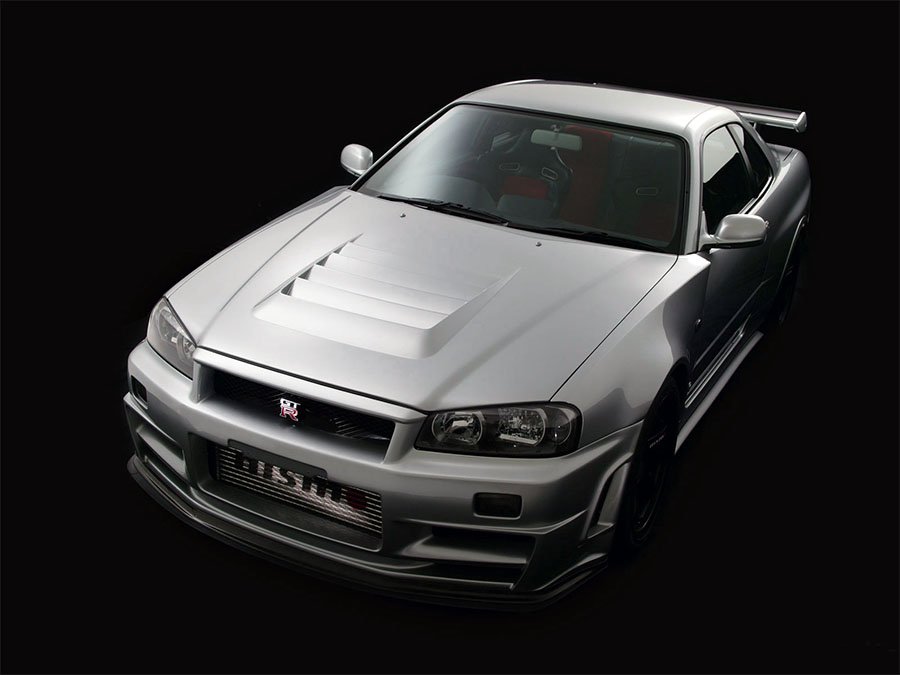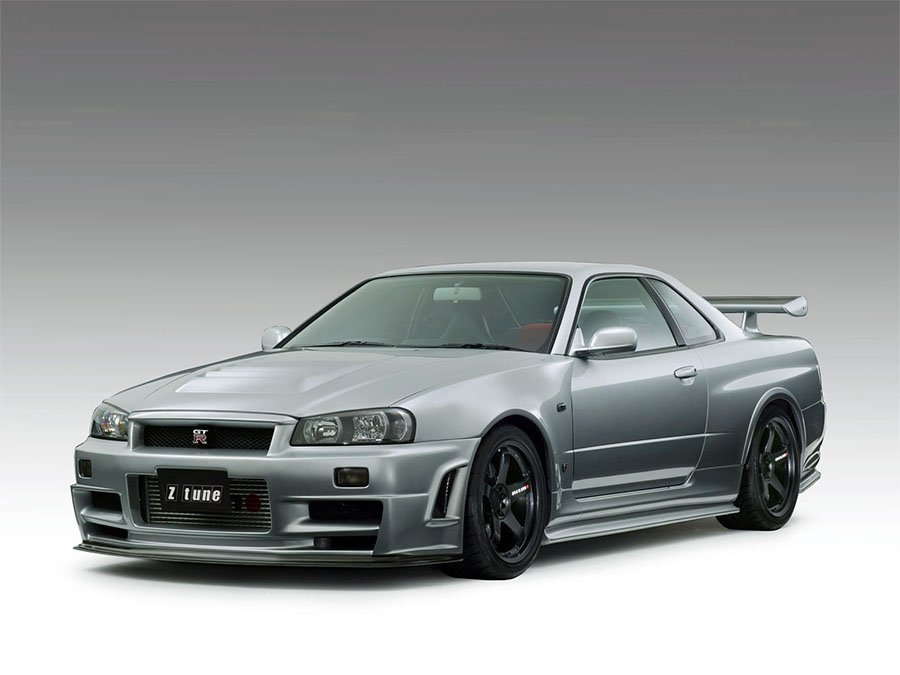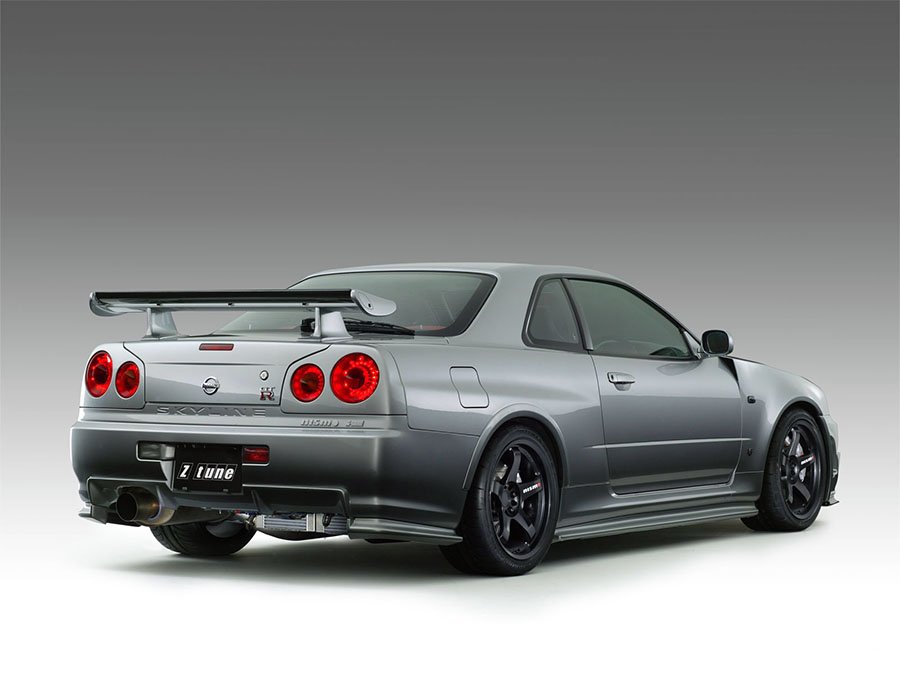Guide: Nissan R34 Skyline GT-R Nismo Z-tune - a Historical & Technical Appraisal
/BACKGROUND
Having been founded in 1984 following the merger of Nissan’s Oppama and Omori competition departments, Nissan Motorsport International (Nismo) went on to achieve great things in various disciplines of circuit racing.
Most notably, Nismo created an array of championship-winning Group C cars and the Skyline GT-R which, once rule-makers had excluded it from the Group A Touring Car scene, became the platform of choice in Japanese GT racing.
Beyond the standard iterations of the road-going R32, R33 and R34 GT-R, Nismo developed further uprated N1 versions of each to homologate special parts for racing use. There was also the famous R33-based 400R of 1996 inspired by that year’s GT1 class Le Mans 24 Hour Skylines.
Unfortunately, a similarly enhanced 400R-style version of the R34 produced between January 1999 and August 2002 was never officially offered. Customers could of course equip their car with aftermarket parts from the Nismo catalogue, but R34 production came to an end without a true off-the-shelf super sports variant having been produced.
Unexpectedly, that changed 18 months after R34 production ended when the green light was given for a limited run of arguably the most extreme GT-R road cars yet seen.
Built to celebrate Nismo’s 20th anniversary, the R34 Skyline GT-R Nismo Z-tune was developed out of an R34-based concept that first broke cover in the year 2000. That formidable Z1-engined machine had debuted at Mount Fuji during the Nismo festival on November 26th 2000 where it won the Tuners’ Battle contest.
Powered by an enlarged 2.8-litre Z1 engine with circa 600bhp and a most comprehensive list of upgrades, the car was subsequently refined over the next couple of years to transform it into a suitable road-going machine. This involved much attention to the ride, interior, engine durability and emissions compliance, during which time the engine evolved to Z2 specification.
An intensive R&D programme culminated with a visit to the Nurburgring in mid 2003 after which Nismo was given permission to build a run of 20 cars to celebrate their 20th anniversary.
By this time, the R34 GT-R had been out of production for the best part of a year so Nismo began the hunt for suitable donor cars: standard JDM V-Spec examples were sought with no body damage and less than 30,000km on the odometer.
Back at Nismo’s Omori facility, each car was stripped back to a bare shell and rebuilt from the ground up.
The Z-tune GT-R was publicly announced on January 14th 2005 with a price around double that of the original V Spec. The first customer cars were delivered shortly afterwards.
ENGINE / TRANSMISSION
The Z-tune’s hand-built Z2 straight six engine used a GT500-derived RRR cast-iron block which, thanks to its thicker cylinder walls, offered improved strength and rigidity.
Compared to the standard RB26DETT motor, Z2 engines had their cylinder bores enlarged by 1mm (to 87mm) and stroke extended by 4mm (to 77.7mm). Displacement was 2771cc which represented a gain of 203cc.
Nismo added new lightweight forged pistons with cooling channels, a long stroke GT500-derived crankshaft (forged and fillet roll machined), GT connecting rods made from SNCM 439 refined steel (for light weight and maximum strength) and a baffled oil sump plate.
The machined dual overhead camshaft 24 valve cylinder head featured combustion chambers that were optimised for volume and profile. Camshafts optimised for lift and valve timing were installed along with a metal head gasket plus a Nismo GT plenum with uprated intake manifold. A new silver grey cam cover featured both Nismo and Z2 branding.
A pair of heavy-duty IHI turbochargers were developed specially for the Z-tune along with large diameter polished turbine outlet pipes. Cooling was significantly improved thanks to a Nismo intercooler, an upgraded radiator and a pair of additional front-mounted oil coolers installed on either side of the intercooler. Integrated underneath the Z-tune’s hood was a special intake system which fed fresh air to the airbox from the nose aperture between the headlights.
Other special equipment included high-flow fuel injectors, an uprated fuel pump and a new Weldina NE-1 catalysed exhaust system fashioned mostly from titanium (just the front tube was fabricated from stainless steel).
The engine management software was re-mapped which allowed the Z2 motor to rev to 8000rpm.
An 8.5:1 compression ratio was carried over from the standard R34 GT-R.
Peak output was 500bhp at 6800rpm and 398lb-ft at 5200rpm. For comparison, the original R34 GT-R produced 276bhp at 6800rpm and 289lb-ft at 4400rpm.
Transmission was through the R34’s Getrag V160 six-speed manual gearbox, a new Super Coppermix twin-plate clutch, a carbonfibre driveshaft and the V Spec’s ATTESSA E-TS Pro four-wheel drive system with mechanical LSD up front, active LSD at the rear and re-rated traction control system. Additional transmission and rear differential coolers were also installed, each with their own temperature-activated electric pumps.
CHASSIS
To beef up the R34’s steel bodyshell, Nismo added extra spot welding and strategically located carbonfibre-reinforced polymer (CFRP). CFRP was added to the front suspension turrets, the floorpan, central tunnel and in the trunk. A Z-tune-branded titanium brace was installed between the front strut towers.
As per the standard R34 GT-R, suspension was via a fully independent multi-link arrangement with anti-roll bars at either end.
The Z-tune was further enhanced with re-calibrated suspension and camber settings, an extremely expensive set of three-way adjustable Sachs racing dampers, thicker anti-roll bars and harder rubber bushings.
Stopping power was significantly improved thanks to bigger discs and beefier calipers.
The original 324mm diameter front discs and four-piston calipers were switched to 365mm two-piece discs with six-piston monobloc calipers. At the back, the 300m discs with twin-piston calipers made way for 355mm single piece discs with forged four-piston calipers. Uprated pads and hoses were also installed.
Unique black-painted Rays LM GT4 GT500 18 x 9.5-inch wheels were half-an-inch wider than standard and came shod with Bridgestone Potenza RE-01R tyres.
A standard 65-litre fuel tank located under the trunk floor was retained.
BODYWORK
Most of the GT-R Z-tune’s exterior upgrades were designed to optimise airflow.
Nismo fitted a new CFRP front bumper with bigger brake and radiator intakes, larger side vents and an exposed carbonfibre chin splitter. Underneath was a new CFRP panel to smooth airflow beneath the car.
The original hood was switched for a GT500-style CFRP item with five massive central vents. The underside incorporated that aforementioned CFRP intake for the airbox.
New front fenders were also fashioned from CFRP and subtly flared to accommodate those wider Rays wheels.
Deep side and rear skirts were fabricated from ABS resin.
The discrete rear wheelarch flares and new rear spoiler flap were CFRP.
At the back of the car was a subtly modified rear apron. Unlike the regular V Spec upon which these cars were based, the Z-tune did not retain a carbonfibre diffuser.
INTERIOR
To add a touch of luxury, each Z-tune was re-trimmed with black leather and red alcantara upholstery.
Red alcantara was used for the seat centres and door panel inserts. The new three-spoke steering wheel (with Nissan instead of GT-R branding) was trimmed in a mix of black and red alcantara with red stitching. The centre front armrest and handbrake lever were black leather with red stitching.
New white faced Nismo-branded instrumentation comprised large read outs for the 11,000rpm tachometer and 320kmh speedometer flanked by small gauges for fuel level and water temperature.
A new titanium gear knob was also installed and each car was supplied with a carbonfibre Z-tune-branded briefcase.
OPTIONS
Optional extras were fairly limited and Nismo only officially offered one paint colour: KY0 Z-tune Silver. However, one customer (the owner of what became chassis 010) managed to convince Nismo to retain his car’s original LX0 Midnight Purple III paint.
Buyers could request Bridgestone RE55S semi-slick tyres, factory collection at Nismo’s headquarters and a circuit support package where two Nismo mechanics would carry out pre and post-event inspection / maintenance.
WEIGHT / PERFORMANCE
Although the Z-tune specification included much CFRP, this was offset by the beefed up Z2 engine and more luxurious interior. As a result, weight was officially quoted at 1600kg compared to 1560kg / 1580kg for a standard V Spec in Series 1 / Series 2 trim respectively.
Despite this slight gain, performance figures were on another level to the regular GT-R.
Top speed went from an electronically limited 156mph to 203mph while the 0-62mph time dropped from 5.4 seconds to 3.8 seconds.
PRODUCTION
The prototype Z-tune, chassis BNR34P-001, was followed by a further 19 cars numbered R34-Z-001 to 019.
Text copyright: Supercar Nostalgia
Photo copyright: Nissan - https://www.nissan-global.com





































